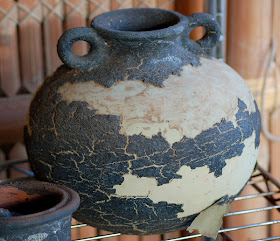I’m very excited about a new touring show that I am designing lights for called “Kulanihakoi: Living Waters.” It’s a hula drama for the stage that will illustrate just how deep the Hawaiian culture runs.
Created by a consortium of Kumu Hula (Hula Masters), the show is bringing Hawaiian myths to life. The ancient people of Hawaii saw gods and goddesses all around them in these beautiful islands, in the sky, clouds, mountains, forests, and in the ocean, the streams, and even in the gentle mists. Their gods assumed the forms of living beings. These deities are instilled in the hearts of Hawaiians today. Their love for the land becomes evident in these stories. How they viewed the waters that formed the islands is fascinating when told in such a unique way, through the eyes of a noble culture that embraced the land and revered the waters that generated so much life.

The thrill of this show for me is that it calls for a host of lighting effects that will need to reproduce nature on a live stage. This is going to be quite a challenge, and I really need to get creative to pull it off.
After reading the script and discussing the scenes with the director, I found I’ll need to simulate swirling waters on the stage floor, a running stream and a reflective pool of water. That’s just for starters... A white muslin backdrop (cyclorama) will be hung upstage that will need images projected onto it as background for the scenes. They’ll consist of a moon and stars, a glowing sun, a forest, a field of Ohia trees, a mountain, a cave, a rainbow, skies ranging from morning to dusk and red clouds streaked across the sky.
Eh, no problem, I can do all that!
But wait...
I’ll also need to create what will look like a flowing waterfall in a lush forest, clouds that don’t just move across the sky, but at one point they need to collide with each other. OK, now it’s getting tough. Oh, and then there will be thunder and lightning and it has to look like it’s raining on stage!
Hmmm...okay, I'll have to think on that one.
Here's a sample of a page from the script. It seems dry and vague when it's on paper but after speaking with the Kumu who each have their scenes to choreograph, I asked about the moods of the scenes, the times of day, the colors they envisioned, and the colors of the costumes.
There are many options with modern lighting these days. I could accomplish much of this using a video projector for all the scenic elements on the cyclorama and moving lights to produce swirling waters.
Oh, but there’s one more stipulation...if I bring any equipment with me on tour it needs to fit in our flight luggage!
Well, that's gunna be a toughie...
But I think I've found a unique solution!

I had used a certain special effects unit on the
Kahekili tour last year which produced sleepy clouds that moved slowly across the cyclorama. I really liked the fact that it did NOT look like video. This unit is called the SX4 and is basically a motorized ribbon of lightweight metal with clouds cutout of it that is placed into a common lighting fixture between the lamp and the lens. The SX4 is manufactured by an innovative company called
GAM Products Inc. Researching some of GAM's other little contraptions, I figured I could probably create most of the effects I need AND they would ALL fit in my suitcase!
I've already ordered the gear and will report on what happens next week after I've received these little gadgets and have tried them out. The premier of this show is right here on Maui and it's in only 3 weeks!
If I succeed, I just may become the God of Stage Weather!
See Part 2 here
See Part 3 here.























































